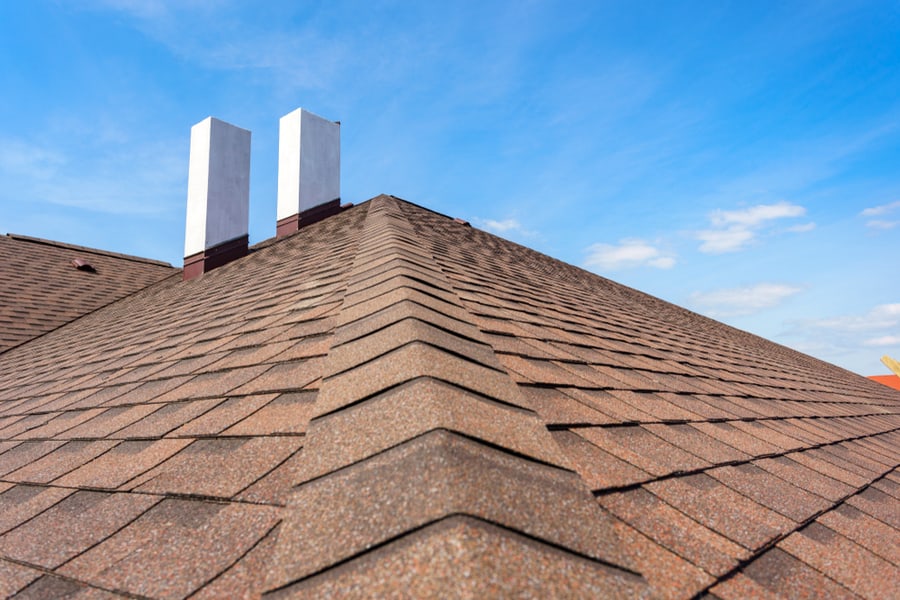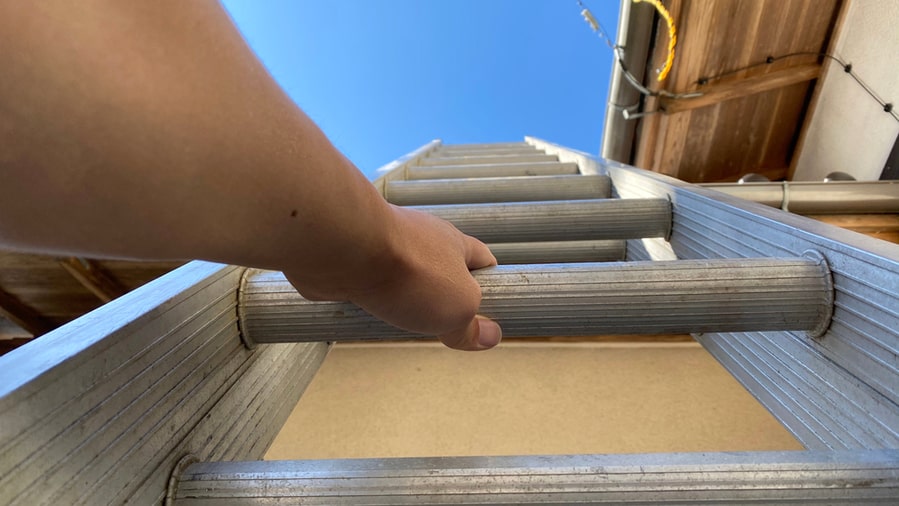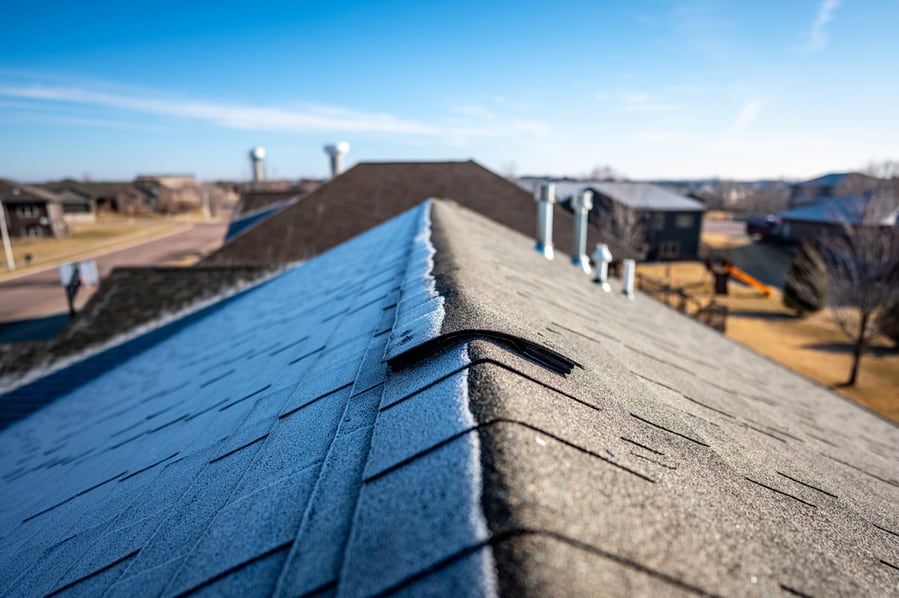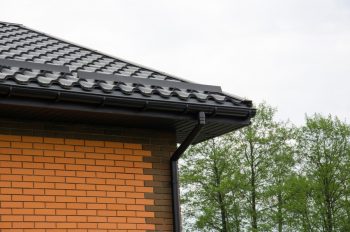
Shingle roof renovation gives you two options, replace the existing one or install the new shingle on top of the old one.
But before you install a new shingle layer, it’s best to know how many shingles are already there. According to some states’ building codes, a set number of layers of shingles are allowed at a time.
How do you know how many layers of shingles are on your roof currently?
One easy observable clue homeowners can use to tell when they already have multiple layers of shingles is when the roof has an overall lumpy appearance.
If areas at the roof penetration, like the plumbing vents and gas appliance flues, have a lumpy appearance, you likely have multiple layers of shingles.
To count the number of layers of shingles you have on your roof, all you have to do is:
- Place a ladder on your roof.
- Go up and examine the roof’s edge
- Count the layers of shingles.
Note that most homes with shingle roofing have two layers of shingles, a starter row on the roof sheath, then a top shingle layer you see.
In this article, we’ll walk you through how to count the number of layers of shingles on your roof and the upsides and downsides of having multiple layers.
Steps to Counting Layers of Shingles on a Roof
When you install a layer of shingle on an existing shingle, it’s called a roof-overs, and you need a permit for this project in most cases.
If you are unsure how many layers of shingles you have on your roof already, you must inspect it. The downsides of shingle roof-overs outweigh their upsides, so you must be sure of the number of shingles you already have.
The steps below explain how to count the layers of shingles on your roof.
Step #1: Place a Ladder on the Roof

All you need to count the layers of shingles on your roof is a ladder. The ladder must be long enough to give you access to the roof. If you don’t have a ladder, we recommend you rent one.
An extension ladder is best for this project, as it will give you access to most houses’ roofs, whether a single or two-story building.
When you have access to the ladder, securely place the foot of the ladder on level ground and the top angled on the roof.
Do not place the leader against the gutters of the roof. The gutter is made of fragile aluminum that can easily get pressed. Instead, find the gutter screw and lean your ladder on it.
Step #2: Climb the Ladder and Examine the Roof’s Edge

With the ladder in place, you can then go ahead to climb it. It’s best to have someone at the foot of the ladder holding it in place, as the ladder can easily slip.
If no one is there to assist you, place a heavy object at the foot of the ladder before you climb it.
When you climb the ladder, your aim is not to get on the roof but to get close enough to it while remaining on the ladder to count the shingles. You will examine the shingles from the roof’s edge for the best result.
Step #3: Count the Layers of Shingles

To find out the number of layers of shingles you have on your roof, lift the edge of one of the shingles. Often you will find a starter row of shingles after the first layer of shingle.
The starter layer is the first layer of the shingle, and it is often fitted to the base of the roof. So, if you have one layer before you get to the starter base, you have two layers of shingles.
But if after you lift the first layer of shingles, there is a second layer of shingles not fitted to the roof base, then you have three layers of shingles.
If your shingle is failing, but your roof’s underlying structure and sheathing are in good condition, it’s best to consider a roof over.
Upside to Having Multiple Shingles Layers

Roof-overs come with some benefits compared to replacement. Below are some of the benefits of having multiple shingles layers.
More Convenience
Generally, roof-overs are more manageable than replacing your roof. Since you are not ripping the entire roof, you wouldn’t have to spend extra hours cleaning up the mess.
Lower Cost
In terms of cost, roof-overs cost less because you don’t have to pay to remove the old shingles. You also wouldn’t have to worry about the cost of disposing of the old shingles when you opt for roof-overs.
Less Risk
Compared to re-roofing, fewer risks are associated with roof-overs. For example, the property is always at risk when the storm falls during re-roofing.
Faster Completion
When you skip removing the old shingles, it becomes much faster for roofers to complete the job.
Downsides to Having Multiple Shingles Layers

If you plan on going for roof-overs, you must be aware of the potential problem of one. Below are some of the downsides of having roof-overs.
Extra Weight
Installing a new layer of shingles on an existing one means adding more weight. These extra shingles put a lot of stress on your roof decking.
The extra weight from a new layer of shingles can become an issue later, especially during heavy snowfall or rain.
Difficult To Detect Leaks
It is more difficult to detect the source of leaks when you have more than one layer of shingles because it is difficult to inspect the sheathing. As such, the leks can cause rotting, mold growth, and even wood damage.
It May Not Be Aesthetically Appealing.
Another downside of having roof-overs is that it may not look as appealing as if you installed the shingles on a new roof sheath. Old shingles tend to be curled, torn, and uneven.
As such, this damage does not provide a flat surface for the new shingles, thus making the new roof may end up with noticeable flaws.
Takeaway
If you just bought a new house but are considering remodeling the roof, always consider the number of shingles before considering going for roof-overs.
The easiest way to tell how many shingles you have on your roof is by climbing the roof to inspect and count them. If your roof is too high up, ask a professional to do so and also install the new shingles.
Frequently Asked Questions
How Many Layers of Shingles Is Best To Have?
The ideal layers of shingles to use on your roof depend on your situation. In most cases, two layers of shingles are perfect. However, the layers of shingles can go as high as 4, which is ideal for protecting against fire hazards.
Should You Install Roof-Overs Without Asphalt Shingles?
Roof-overs are ideal when you have asphalt shingles already installed. Shingles are known to curl up with time, and when the old shingles are curled, it makes installation unsuccessful.
As such, it is not advisable to install roof-overs without asphalt shingles.










